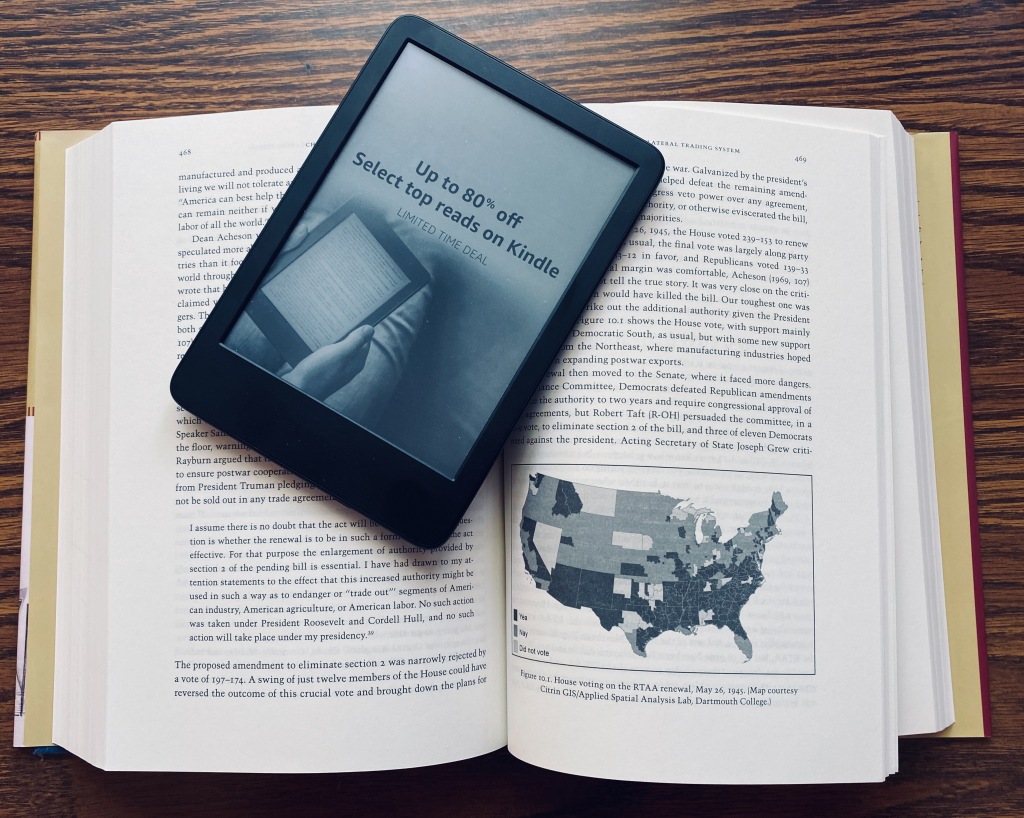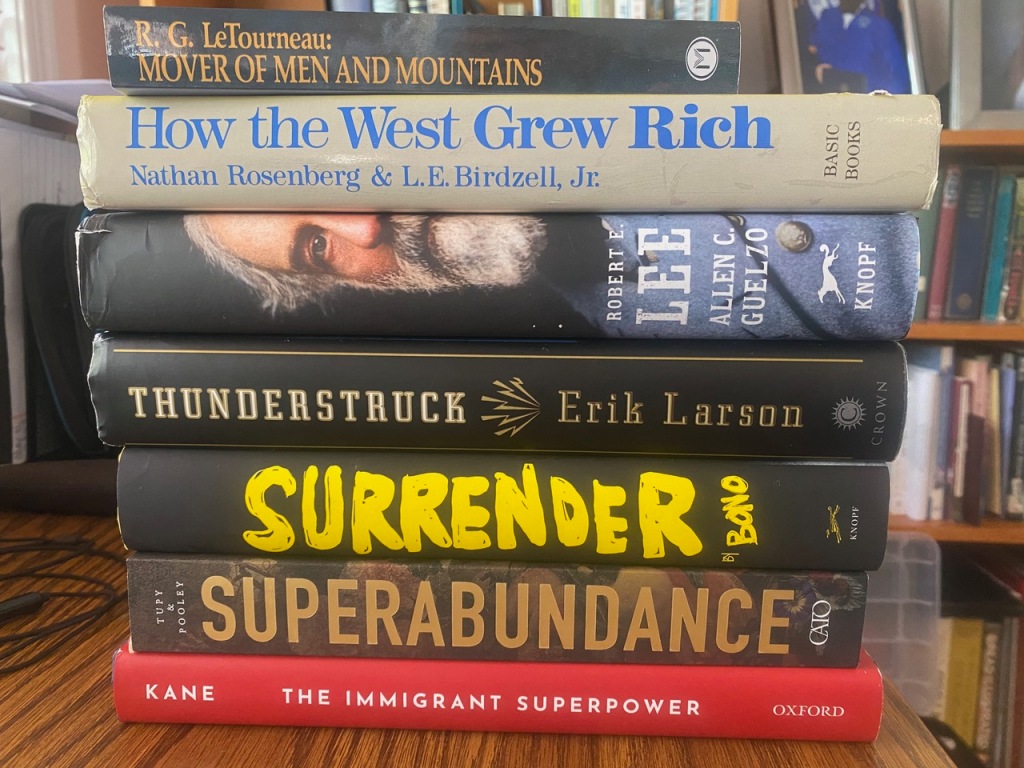The Wall Street Journal recently reported that Baby Boomers like me prefer to read books on their Kindles while their children and grandchildren prefer real books made of cloth and paper. It seems like it should be the other way around, but I can understand the appeal of both modes of reading.

When I bought my first Kindle more than a decade ago, it soon became my primary way of reading books. I even joked for a while that “I don’t read books anymore” and imagined the day that my bookshelves would be mostly empty and brick-and-mortar bookstores would all be closed.
What I’ve liked most about the Kindle is its portability, self-illumination, and note-taking ability. If I go on a trip, this device weighing just a few ounces can literally carry a library of hundreds of books and articles. This is especially useful if it spares me toting a thousand-page tome that can weigh 2 or 3 pounds. In pre-Covid days, while standing on a packed Metro train into work, I could hold on to a pole with one hand and read from my Kindle with the other.
The self-lighting means I don’t need to find a bright corner to read. The “paper white” technology is really amazing in how it backlights the pages. This can allow reading in unusual places! In September 2020, on a backpacking adventure in Colorado, I read a few pages of James Joyce’s Dubliners as I settled for the night in my small tent at 10,700 feet. It would have been awkward to read a real book under an electric lamp (as well as carrying the additional weight in my backpack). Self-lighting also helps if you want to read in bed without disturbing a spouse who can’t sleep with the lights on.
With the Kindle, I can easily highlight passages and type in notes or comments on the page I’m reading. I know I can do the same with a pen or pencil in a real book, but with the Kindle I can download the highlights and notes to my laptop. This is especially useful if I’m writing a review for the blog or a publication. The Kindle allows me to export my notes via email, and then I can cut and paste them into a Word document. No retyping required.
As a bonus, the Kindle allows me to look up unfamiliar words instantly and it even keeps them stored in a “Vocabulary Builder” list that you can review in the form of flash cards. Over the years I’ve accumulated about 700 words on my list, e.g. palimpsest, aperitif, phlogiston, escutcheon, impecunious, objurgate, alpenglow, and gewgaw. (OK, I can already imagine some readers thinking, “He doesn’t know what THAT word means?”)
Despite all those advantages, I’ve found myself in recent years turning back to old fashioned books for more of my reading. Yes, there really is something pleasurable about turning paper pages in a book resting on your lap. And since I retired in 2020, I’ve had more time to sit in my favorite chaise lounge at the end of the sofa under a bright LED bulb. Reading on the Metro is no longer a factor.
While a new printed book is usually a few dollars more expensive than the Kindle version, a used printed copy is usually cheaper. To save money, I often order used books from third-party vendors on Amazon. I’ll also browse the basement of the Freeman Store and Museum in Vienna with its collection of used history, biography and fiction books (hardback $2, paperback $1).
If a book is heavy in photos or graphs, a real book is better. Kindle can display graphs and tables, but not in color and not always in a convenient format. Real books can also be more easily loaned or given away than Kindle books. And physical books are better in a reading group. If someone refers to “the quote at the bottom of page 179,” I can more quickly turn to it with an actual book than with a Kindle.
Real books do take up a lot of space and they’re heavy to move. We still have a few hundred on the bookshelves in our living room and more children’s books stored in a closet. I’ve culled our books in recent years by sending photos of them to people I know and asking if they want them for free. (See the photo below that I recently sent out.) I also drop them off at the Freeman Store or at a charity shop for resale. To prevent books from accumulating, I try to follow a “just in time” inventory approach by not buying one unless I’m planning to read it in the next three months. The Goodreads website is a great way to keep a virtual library of books that I might want to read one day without actually buying the books. (My “Want to Read” list has grown to an overly ambitious 494 and is probably due for a cull itself.)

I’ll still buy and read books on Kindle, but they’ve become the exception rather than the rule. Of the 40 books I read last year, 5 were on the Kindle. Of the 20 I’ve read so far this year, 4 have been on Kindle. So as an economist would say, my “revealed preference” is for physical books. But I can go either way, depending on the book and circumstances. When you’re lost in a good read, it doesn’t really matter how the words are formed before your eyes, whether by ink or electrons!
Kindle sounds great, Mr Griswold! I hope there will be more devices with such reader-friendly screen. For my own study, I mostly use “the real book” or read e-books on IPad. (Kindle stopped its service in China … ) Recently, I borrowed a philosopher’s biography and an Economics book on the Shanghai Library App, which only cost me 5 RMB (less than 1 dollar) for the mail to home and other service. This library service is quite great as I just have to return by mail two months later.